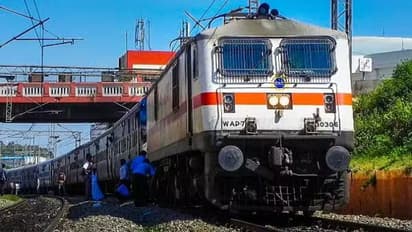Why railways keep engines running despite long stops?

Synopsis
Trains keep their engines running during long stops for efficiency and safety. Restarting consumes more fuel and time, while the air system requires pressure to maintain brakes. Electric trains must be ready to move quickly, making it impractical to turn off the engines.
Why do railways not turn off engines despite long idling? This question often arises among train travellers who notice that trains can remain stationary for hours without shutting down their engines.
Most people are accustomed to turning off their vehicle engines at traffic signals, especially if they anticipate waiting for more than two minutes. This practice is believed to save fuel and reduce air pollution. However, the situation is different for trains, which often keep their engines running, even during extended stops.
Did Southern Railway just solve Tirupati rush? Extra coaches added to 8 trains!
Experts provide several technical reasons for this approach. Firstly, restarting a train’s diesel engine consumes more fuel than simply keeping it running. The process of starting the engine takes time and fuel, with a diesel engine requiring more than half an hour to warm up. Once it is running, the fuel needed to keep it operational can last approximately eight hours. Hence, it is more efficient for loco pilots to leave the engine on, even when the train is idle for hours.
Electric trains also follow this practice. Once they begin their journey, they must remain prepared to move promptly upon receiving a signal. Turning off the engine would delay this response time, making it impractical. Additionally, frequently turning the engine on and off can lead to technical issues and potential damage to the machinery.
Kerala: Loco pilot saves man walking on tracks before mishap near Parassala
Another important factor is the air system, which is integrated into the engine. This system charges the brakes of the train. If the engine is turned off, the air pressure decreases, risking brake failure. Once the air is released, it can take between 30 minutes to an hour to fully recharge the system. Keeping the engine running prevents this downtime, ensuring the train remains ready for departure.
In some cases, such as when goods trains stop for hours, loco pilots still choose to keep the engine on. The priority is to ensure that the train is always ready to move at a moment’s notice when a signal is received.
Get all the latest Automobile News, including updates on Electric Vehicles, new car and bike launches, reviews, and auto industry trends. Stay informed about mileage comparisons, performance insights, and expert opinions to guide your next vehicle choice. Download the Asianet News Official App for all the latest updates from the world of automobiles.